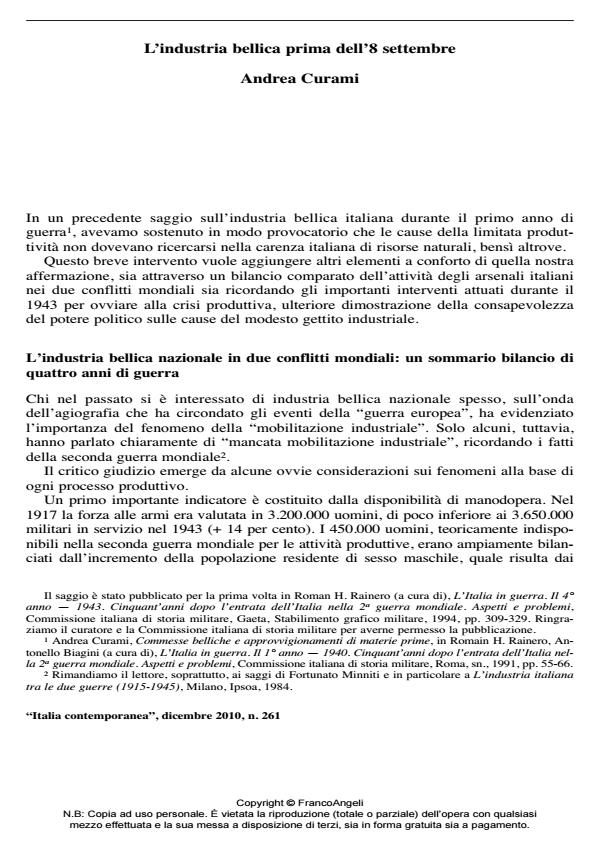The war industry prior to the 8th of September
Journal title ITALIA CONTEMPORANEA
Author/s Andrea Curami
Publishing Year 2011 Issue 2010/261 Language Italian
Pages 15 P. 665-679 File size 115 KB
DOI 10.3280/IC2010-261006
DOI is like a bar code for intellectual property: to have more infomation
click here
Below, you can see the article first page
If you want to buy this article in PDF format, you can do it, following the instructions to buy download credits

FrancoAngeli is member of Publishers International Linking Association, Inc (PILA), a not-for-profit association which run the CrossRef service enabling links to and from online scholarly content.
The A. examines the reasons for the underutilization of the Italian industrial potential during WWII, despite a supply of manpower, sources of energy and raw materials much larger than during the Great War, when the Italian manufacturers had been able to set up entirely new branches of production, reaching high productive standards while keeping up with technological progress. Poor entrepreneurial planning and scarce results, both in quantitative and qualitative terms, characterized thus the Italian industrial effort during the Second World War, as a consequence of the greater political weight of the industrial establishment on the one hand, but also because of the regime fears to impose choices that might strongly reduce mass consensus. In Italy, as in Germany, crucial was the issue of manpower supply, particularly of skilled labour, for the industrial sector. The requests the military advanced by early 1943, concerning a more intense exploitation of labour (extended work time, new flexibility rules, a larger recourse to women and teenagers and stricter controls) were rejected by Mussolini, who shortly after deprived the General Staffs of whatever control they might retain on war production.
Keywords: Second World War, industrial mobilization, war industry, armed forces, Great War, manpower supply
Andrea Curami, L’industria bellica prima dell’8 settembre in "ITALIA CONTEMPORANEA" 261/2010, pp 665-679, DOI: 10.3280/IC2010-261006